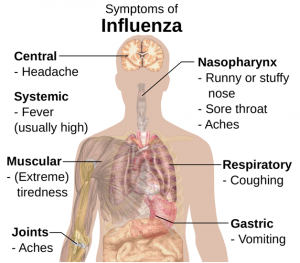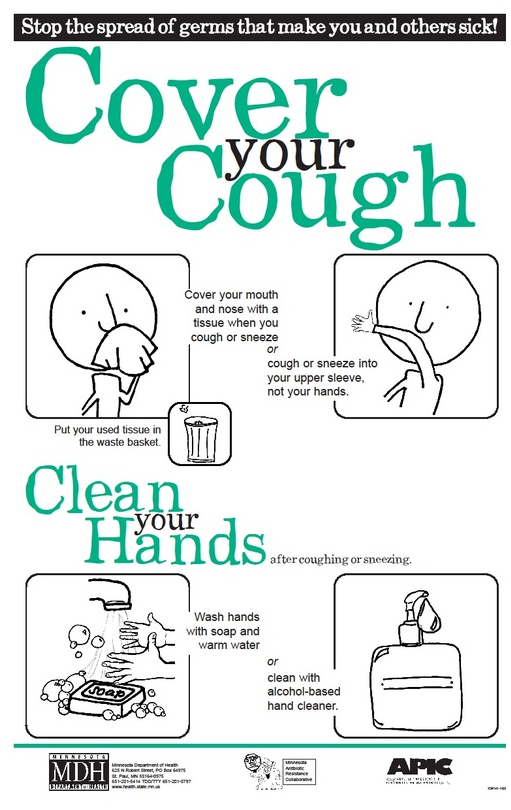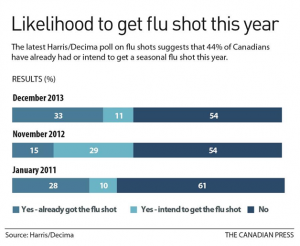
Every year, doctors in Niagara Falls see many cases of the flu. A mother comes in with a child who isn’t feeling well, and sometimes we have to deliver the dreaded news, “She has the flu.”
It’s not something anyone likes to hear because flu symptoms are uncomfortable and inconvenient. Due to the viral nature of the flu, it’s also easy to spread to your friends, family, and coworkers. No wonder so many people are afraid of getting the flu.
Now that flu season is upon us, more people are washing their hands, buying hand sanitizer, disinfecting doorknobs, and distrusting food workers who don’t cover their mouths when they cough and sneeze.
And as a physician in Niagara Falls, you smile when you see that, because it takes preventative measures like those to keep people from getting infected. The flu spreads easily indoors, and with the colder winter months, we’re all spending more time indoors. Are you prepared for flu season? Or are you going to be out of commision for a week and potentially get the people around you sick too?
According to Infection Prevention and Control (IPAC) Canada, this flu season is already setting records. More people became infected with Influenza between August 24 and September 21 than they have during those weeks in the past 15 years.
Most people shouldn’t be afraid of the flu, though. After all, it’s a pretty common infection, and symptoms of the flu are easy to spot, flu remedies are readily available, and flu prevention doesn’t take that much effort — It does take some, though, and you have to know what you’re dealing with.
To help with your fight against flu season, here’s 6 things you need to know about the flu:
Influenza, more commonly known as the flu, is an infection of the nose, throat, and lungs. There are 3 types of flu:
Influenza A and B are the types most common in humans.
According to IPAC Canada, Influenza A causes a “more severe illness” than Influenza B and is the strain that has caused worldwide epidemics (i.e. H1N1 and Avian Influenza).
If you become infected, you’ll usually notice symptoms of the flu appearing between one and four days after you come in contact with the infection, and you’ll typically stay sick for 7-10 days.
While less common, there are a few other types of “flu” that receive a lot of media attention. While Niagara Falls doctors don’t see as many cases of the following, it’s helpful for you to know what they are, so we’ll briefly mention them. Other viruses people commonly refer to as “flu” are H1N1, Avian Influenza, and viral gastroenteritis.
The flu spreads from person to person through “droplets” from saliva or a sneeze. You can get infected when these droplets land in your:
If you have the flu, you got it from someone else already infected, and chances are you’ve already spread it without knowing it. Since you don’t starting feeling flu symptoms for at least 24 hours after coming into contact with the virus, you can spread it without knowing.
You can spread flu “droplets” through:
Talking? Really? Yes, even just having conversation can spread the virus. Besides just interacting with a coughing, sneezing, talking person who has the flu, you can come into contact with flu droplets just by touching high-traffic objects.
Yes, you come into contact with the flu virus by touching any of the below.
“The period when an infected person is contagious depends on the age and health of the person,” The Center for Disease Control reports. “You may be able to pass on the flu to someone else before you know you are sick, as well as while you are sick.” In healthy adults, the virus is usually contagious beginning 1 day prior to symptoms starting and 5-7 days after the symptoms start. Children and people with weakened immune symptoms might be contagious for longer periods, though.

Do you have the flu? You might if you’re experiencing these symptoms:
Even if you don’t have a fever, you might still have the flu. And while it’s more common in children than adults, vomiting and diarrhea are sometimes flu symptoms as well.
Since cold and flu symptoms are often similar, they can be easy to confuse. Flu symptoms are usually more severe, come on more suddenly, and include the symptoms of fever, body aches, dry cough, and extreme fatigue more frequently.
A runny or stuffy nose is a more common cold symptom, and cold symptoms are generally more mild than the flu.
“Most people who get influenza will recover in a few days to less than two weeks,” the CDC reports, “but some people will develop complications (such as pneumonia) as a result of the flu, some of which can be life-threatening and result in death.” People in poor health, children, and the elderly are at the highest risk of developing flu complications. Contact your doctor if you notice any of the following symptoms in addition to normal flu symptoms.
In adults:
In children:
United States founding father Benjamin Franklin once said, “An ounce of prevention is worth a pound of cure.”

While he wasn’t quite advanced enough to use the metric system, his words are wise and especially applicable to flu season.
Even though you can go to any physician in Niagara Falls for flu remedies, most flu treatments simply make your symptoms more bearable and the duration of your illness a little more bearable. The best way to treat the flu is to prevent it.
Here are some ways you can keep from getting and spreading the flu this flu season:


The Canadian government has stated, “The best way to prevent the flu is by getting a flu vaccine, also known as a flu shot.” It recommends flu shots to everyone 6 months or older and this is the number one way to prevent the illness.
In 2014, Harris/Decima performed a poll for The Canadian Press showing that adults aged 18-34 and people with children in their homes were becoming more convinced of the efficacy of flu shots. In fact, by December of 2013, 44% of Canadians reported that they already had or intended to get a flu shot.

This is a good trend, and it’s something Niagara Falls doctors are happy to see.
However, because many people don’t know the facts about flu shots, many people are nervous about them. That’s understandable — It’s not wise to let someone inject you with a substance you know nothing about, even if it’s a reputable physician in Niagara Falls.
We’ve compiled a list of flu shot facts to answer some common questions you might have.
The short answer is the flu shot is not and the nasal spray vaccine is.
According to the CDC (Center for Disease Control), the following side effects may occur after a flu shot:
However, since the virus in the shot is inactive, you cannot get flu from a flu shot.
One Medical Group advises, “If you think you’re coming down with a bug, and especially if you have a fever, we recommend waiting to get the flu vaccine until you’re feeling better.” The flu shot works by enticing white bloods cell into laying a sort of “groundwork” for the real virus. It won’t work as a treatment, but only a preventative measure. Think of it like working out for a competition — It helps in the weeks prior to the event, but it’d be pretty useless and even detrimental the day of the event.
However, One Medical writes, “if you have a respiratory illness without a fever, or if you’re only mildly ill, it’s OK to get the flu shot.”
“It takes a week or two to get protection from the vaccine,” Harvard Health reports. If you think you were exposed to the virus prior to being vaccinated, they recommend that you consider taking antivirals. While the flu shot is an effective defense against the flu, you should still avoid contact with people who have the flu, as the defense isn’t bulletproof.
If you do get the flu, most flu remedies exist to make you more comfortable and can’t really affect the illness. The Canadian board of health recommend resting, drinking plenty of fluids, and taking medication to reduce any fever or aching.
One treatment that does combat the illness is antivirals.
IPAC Canada reports “When taken before infection or during early stage of the disease (within two days of illness onset), antivirals may help prevent infection, and if infection has already taken hold, their early administration may reduce the duration of symptoms by one to two days.”
Currently, the Canadian government has authorized three antiviral drugs for treatment of the flu, including:
You can talk with one of our doctors in Niagara Falls for prescriptions for these antivirals. If you’ve ever had the flu, you know that shortening that illness by even a couple of days is worth it.

While flu season can be an uncomfortable and inconvenient, it’s not something you have to be afraid of. By staying informed, practicing a healthy lifestyle, and taking preventative measures, you should be able to take on this flu season without fear.
And don’t forget that your friendly doctors in Niagara Falls are always here to help. If you ever have questions about the flu or any other illness, please stop by one of our walk-in clinics